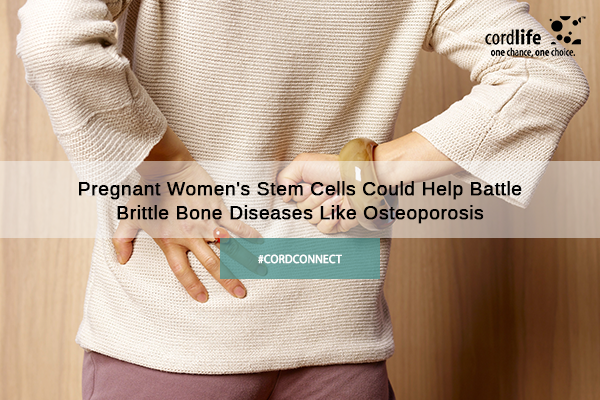Table of Contents
People suffering from week bones could recover with the help of stem cells, derived from pregnant women, according to a new study. The research has shown us the stem cells harvested from the amniotic fluid of the pregnant women is the answer to osteoporosis, even though it was conducted on a mice model. The researchers had come to this conclusion after observing 78% lower bone fractures among animals, who were suffering from fragile bone structures.
This finding has truly evoked hope for the children, who are going through various rare bone conditions since birth as well as adults, who are suffering from osteoporosis. Not only that! This finding may also prove beneficial for the astronauts, who lost bone mass in orbit. Pascale Guillot, the lead of the study, conducted by the University College London, said, “The stem cells we’ve used are excellent at protecting bones. The bones become much stronger and the way the bone is organised internally is of much higher quality.”
Previous studies have proved that mesenchymal stem cells (MSCs) collected at an early stage are more effective than that collected at a later stage. It has several other advantages as well. Early taken MSCs have the ability to expand into greater numbers when required in clinical therapies. They don’t form tumors. They make sure not to attack the immune system of the receiver. They are small thus can move easily. And last but not the least, these cells are easier to reprogram, so they can grow into different types of cells.
The researchers’ team at the University College London experimented with MSCs that were collected from the amniotic fluid of pregnant women. They injected the MSCs into mice with fragile bone conditions. Another interesting finding of the study was the way the team completed the research. Anyone might think that the stem cells, injected into the mice, must have done the healing effects as well as helped to create new bones primarily. But this is a wrong notion. The study shows that the stem cells released growth factors which stimulated the bone cells to build stronger bones in the mice model.
Guillot confirmed, “The discovery could have a profound effect on the lives of patients who have fragile bones and could stop a large number of their painful fracture.” Following the successful study with mice, Guillot and the team are hopeful to apply the method in treating brittle bone disorders and osteoporosis that affected more than 44 million patients in the US. Guillot said, “The discovery could have a profound effect on the lives of patients who have fragile bones and could stop a large number of their painful fractures.”
The team is hoping to go about with the human trials within the next two years. If the technique proves effective for humans as well, it could help kids, affected in the womb and during birth. This process will truly help them build healthy bones. And what makes it all the more interesting is, the stem cells used in this research can be transplanted from one patient to another without MSCs matching between the donor and the receiver.
